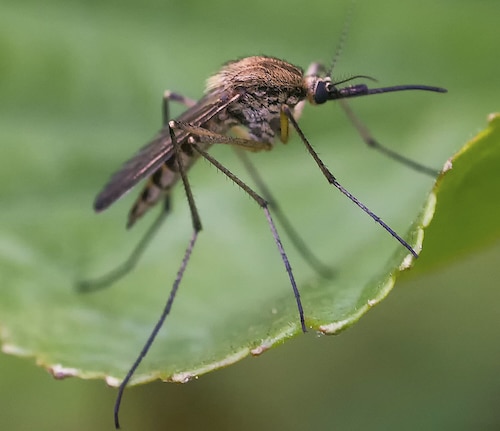
Scotland’s climate hasn’t historically been supportive to large mosquito populations, as it tends to be cooler. But now, scientists have discovered widespread populations of mosquitoes around Scotland, and they fear warming temperatures could lead to increasing public health risks from mosquito-borne diseases.
Scientists at the University of Glasgow’s Centre for Virus Research found 16 different types of mosquitoes around Scotland. In these findings, scientists discovered one of the most common mosquitoes in the world, the Culex pipiens, in Scotland for the first time.

A Culex pipiens mosquito. Ouwesok / Flickr
The leader of the research, Heather Ferguson, told the BBC that the research team was surprised by the widespread presence of mosquitoes in Scotland and warned that the population numbers could continue rising amid climate change.
According to the Central Massachusetts Mosquito Control Program, mosquitoes prefer temperatures around 80 degrees Fahrenheit (27 degrees Celsius), but they can’t function at temperatures below 50 degrees Fahrenheit (10 degrees Celsius). As Wilderness Scotland reported, the average warm-weather temperature for Scotland is about 64 degrees Fahrenheit (18 degrees Celsius), while cooler seasons average 32 degrees Fahrenheit (0 degrees Celsius).
This has kept mosquitoes to a minimum in Scotland. However, as climate change causes rising temperatures, the mosquito populations have better odds of survival. This could also allow non-native mosquito species that carry diseases to spread in areas they haven’t thrived in before.
“Although relatively low in abundance, mosquitoes have been present in Scotland for millennia, and are a natural part of our ecosystems,” Ferguson explained, as reported by The Herald. “While they don’t present a risk to human health here currently, climate change could increase the risk of invasive mosquito species establishing in Scotland. It may also increase the risk for mosquito-borne diseases that are present in some other European countries to establish.”
Scientists found 16 different types of mosquitoes by placing traps at 24 locations all around Scotland. The highest concentrations of mosquitoes were found around Loch of Kinnordy in Angus in eastern Scotland and in Caithness in northern Scotland.
Scientists are asking the public for help with a citizen science project dubbed Mosquito Scotland. As part of the project, the public is being asked to report mosquito sightings via the project website. The Mosquito Scotland project will continue for three years, through 2026.
According to the University of Glasgow, which is leading Mosquito Scotland, vector-borne diseases, like those spread by mosquitoes, account for 700,000 deaths per year. The citizen science project aims to provide more details on mosquitoes and assess risks of mosquito-borne diseases, and this information can also help prepare to handle increased risks to public health.
“At a time of environmental change it is really important to investigate the current and potential risk posed by mosquitoes and mosquito-borne disease,” Dr. Jolyon Medlock, head of the medical entomology and zoonoses ecology team at project collaborator UK Health Security Agency (UKHSA), said in a statement. “This programme of research will be crucial in improving our understanding and preparedness as we continue to tackle future threats to public health associated with a changing climate.’’
The post Mosquitoes Newly Spreading in Scotland as Temperatures Rise, Scientists Say appeared first on EcoWatch.
